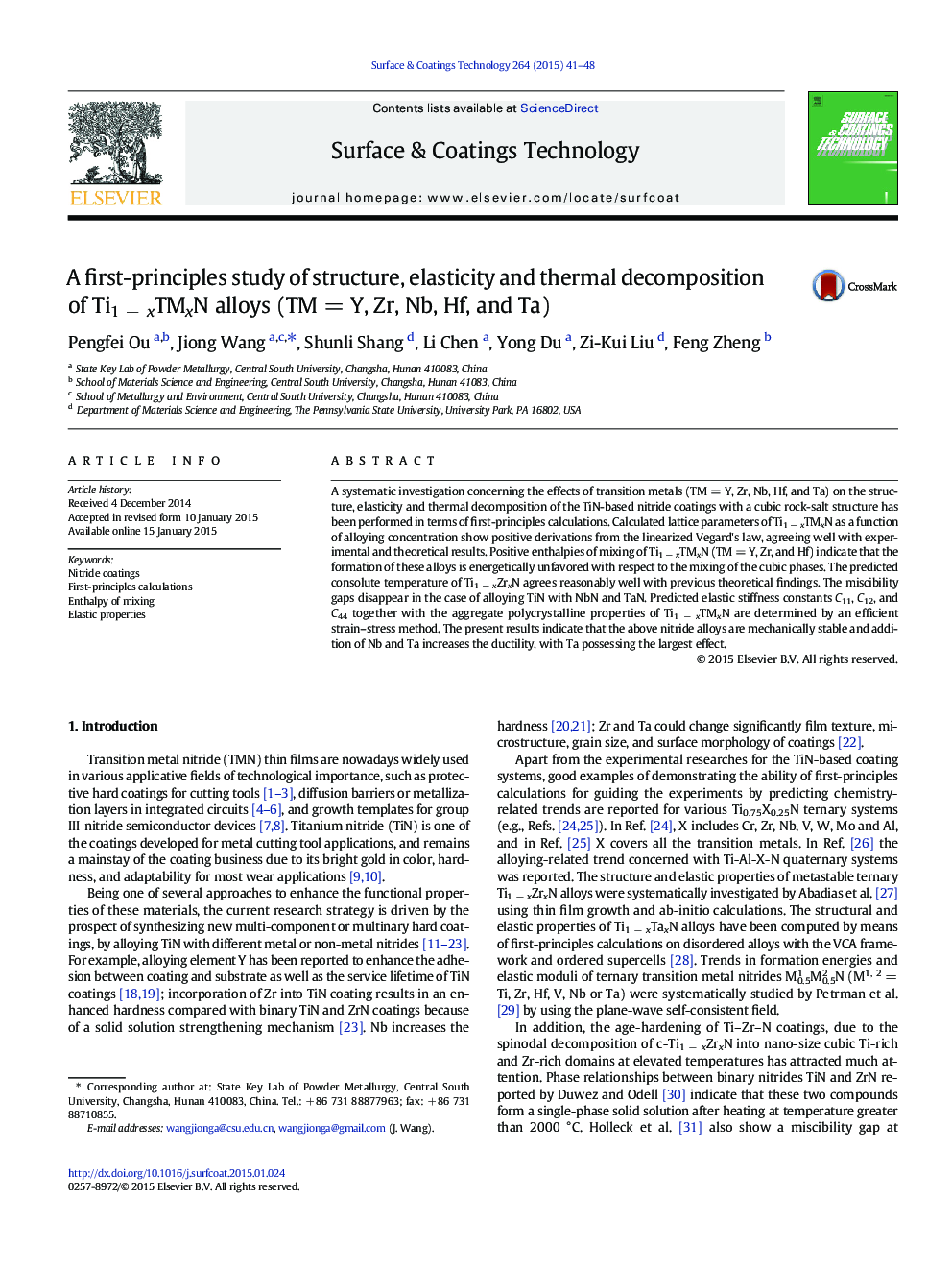| Article ID | Journal | Published Year | Pages | File Type |
|---|---|---|---|---|
| 1657255 | Surface and Coatings Technology | 2015 | 8 Pages |
•Structure, elasticity and thermal decomposition of Ti1 − xTMxN were studied.•We predicted the alloying effects on spinodal decomposition of Ti1 − xTMxN.•Consulate temperatures of Ti1 − xTMxN miscibility gaps were evaluated.•Addition of Nb and Ta increases the ductility, with Ta possessing the largest effect.
A systematic investigation concerning the effects of transition metals (TM = Y, Zr, Nb, Hf, and Ta) on the structure, elasticity and thermal decomposition of the TiN-based nitride coatings with a cubic rock-salt structure has been performed in terms of first-principles calculations. Calculated lattice parameters of Ti1 − xTMxN as a function of alloying concentration show positive derivations from the linearized Vegard's law, agreeing well with experimental and theoretical results. Positive enthalpies of mixing of Ti1 − xTMxN (TM = Y, Zr, and Hf) indicate that the formation of these alloys is energetically unfavored with respect to the mixing of the cubic phases. The predicted consolute temperature of Ti1 − xZrxN agrees reasonably well with previous theoretical findings. The miscibility gaps disappear in the case of alloying TiN with NbN and TaN. Predicted elastic stiffness constants C11, C12, and C44 together with the aggregate polycrystalline properties of Ti1 − xTMxN are determined by an efficient strain–stress method. The present results indicate that the above nitride alloys are mechanically stable and addition of Nb and Ta increases the ductility, with Ta possessing the largest effect.
